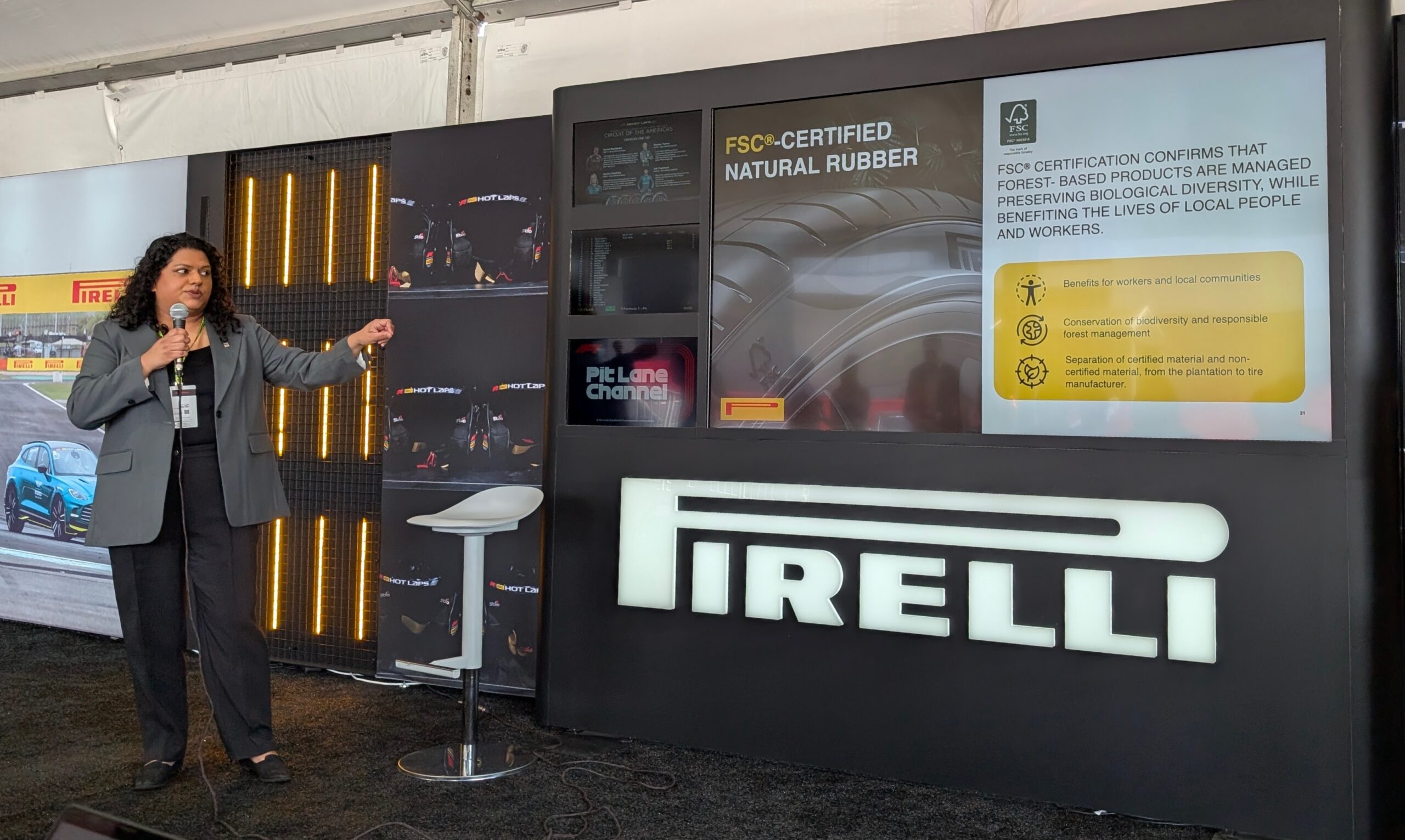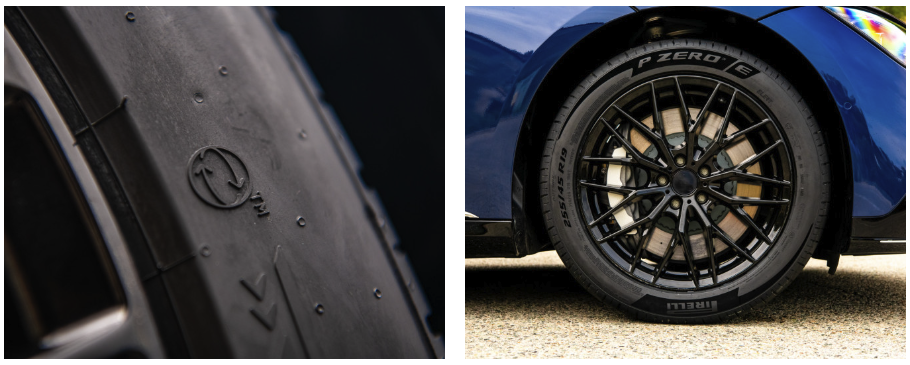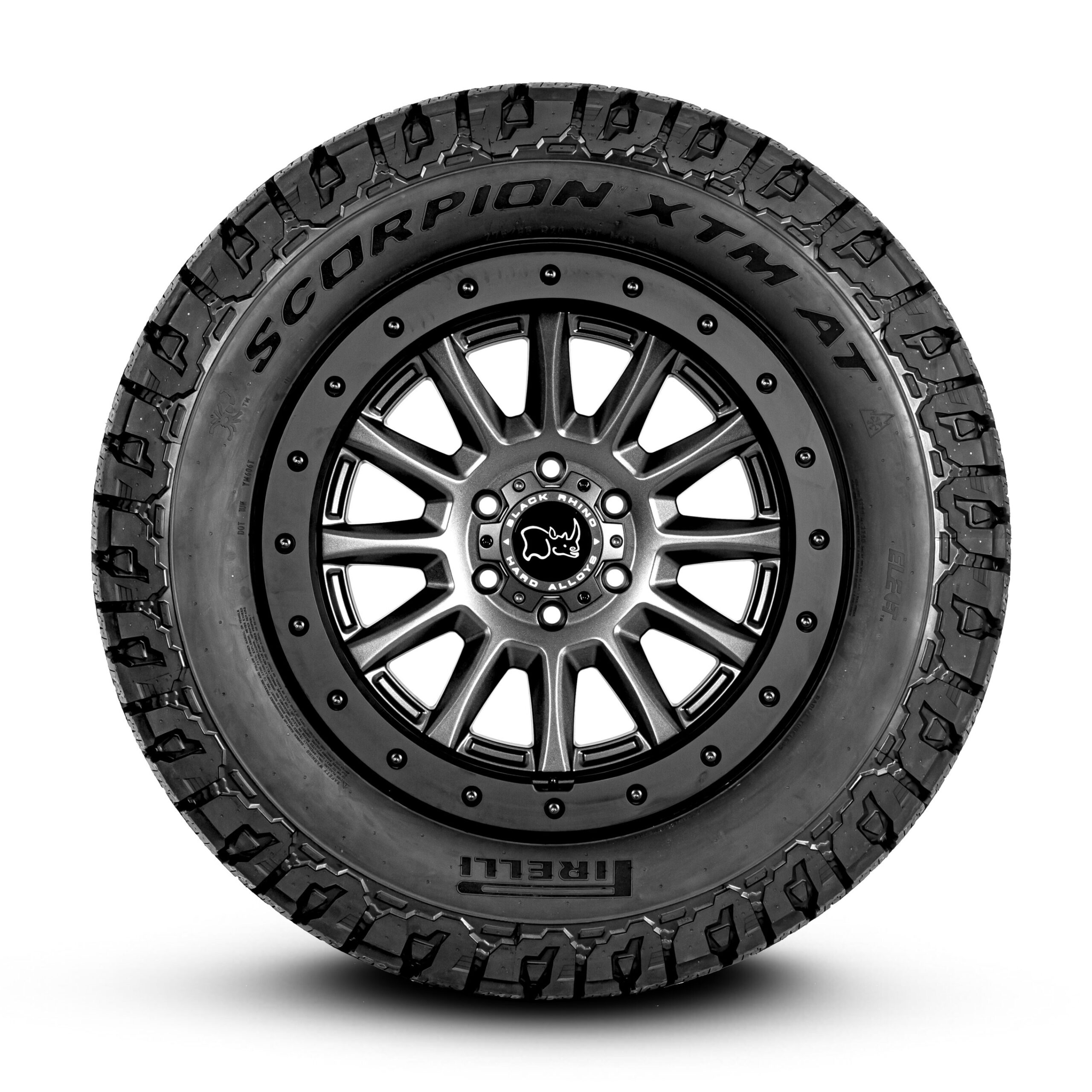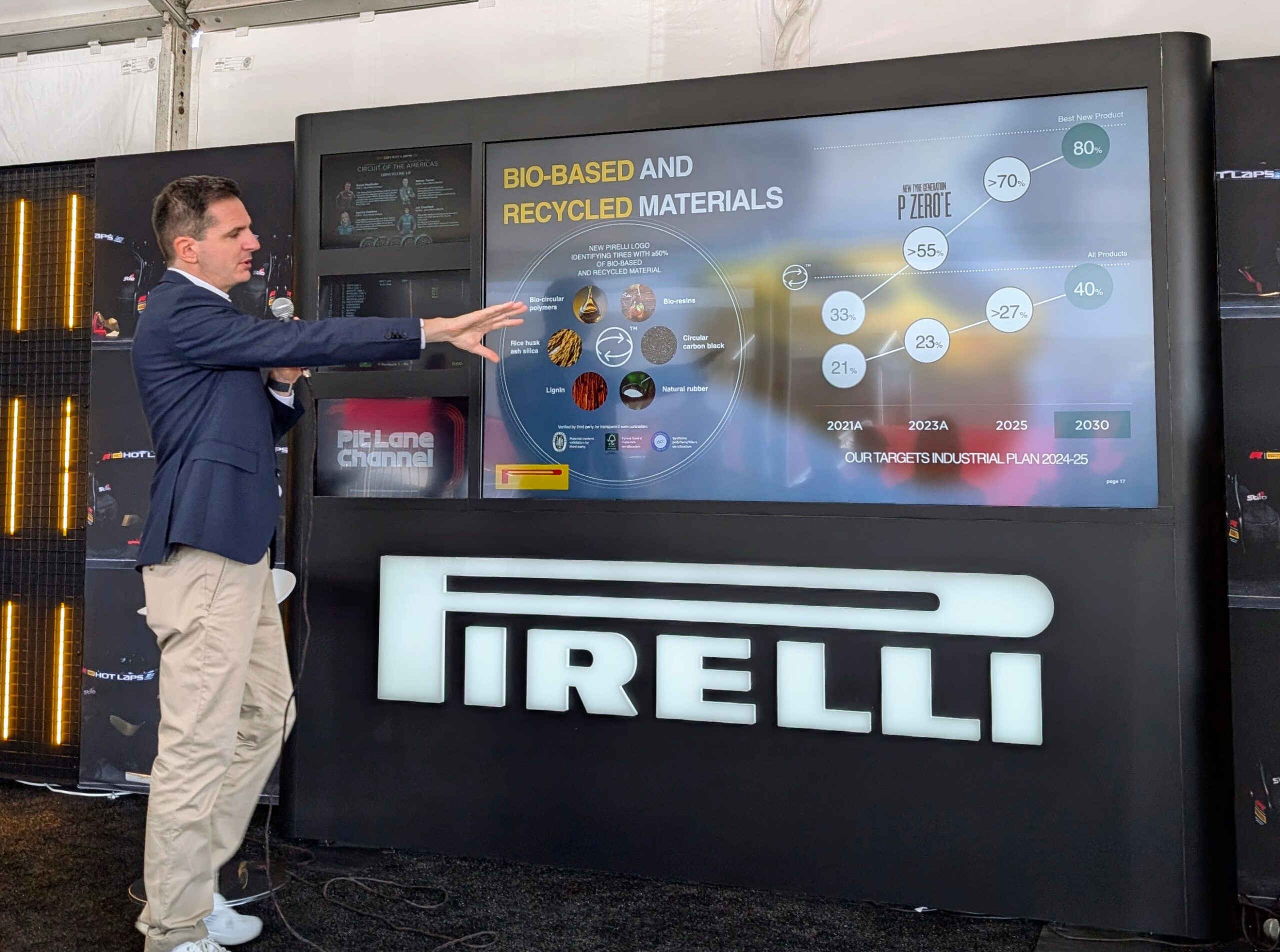Sign up for daily news updates from CleanTechnica on email. Or follow us on Google News!
Pirelli is perhaps best known for racing tires and the high performance consumer products built using that technology, the P Zero lineup. The company brought CleanTechnica out to Austin, Texas, ahead of the Austin Grand Prix to get a firsthand look at its sustainability efforts as it continues the transition from legacy materials and processes to the future of 100% sustainable, bio-based tire production.
Disclaimer: Pirelli paid for the author’s travel and accommodations to attend the event in Austin, Texas.
Pirelli’s Sustainability Journey
Pirelli is the sole tire supplier for Formula 1 (F1) for every race around the world, and while this is a sponsored position, tires are one of the key performance components in Formula 1 racing and Pirelli takes this responsibility very seriously.

In addition to formulating what is likely to be the highest performance set of tires in the world for F1, Pirelli has also achieved 100% Forest Stewardship Council (FSC) certification for its F1 tires. This means that all of the natural rubber used in the tires has been sourced from FSC certified farms and traced all the way through from the rubber farms to the factories making the tires to ensure segregation and compliance.
FSC certification is more than just a stamp on the side of the tire saying that the natural rubber is sourced from compliant trees. It also takes into account the working conditions of the farmers at the plantations and takes a much more comprehensive look at the entire supply chain. This is a great way for companies to show that they are committed to raising the bar for themselves and the supply chain for the goods that go into their products. For tires, there are three specific classes of certifications for tires using 100% FSC natural rubber, for tires using pre- and post-consumer recycled rubber, and for tires using a mix of both.

FSC certification is a huge milestone for Pirelli and will require monumental efforts for the tire company and its natural rubber suppliers around the world. Having said that, at around 20% of the material in a tire, natural rubber is only one of the components in the tire. Focusing on FSC certification alone doesn’t paint the whole picture of sustainability when it comes to tires, so we’re going to have to go deeper.
A Comprehensive Journey
Developing truly sustainable tires is a journey and not something they can be accomplished overnight. For FSC certification for example, first the forests must be upgraded to FSC compliant standards and be certified. From there, the entire supply chain must be tracked, with special care taken to keep FSC certified rubber and non-certified rubber separate all the way through from the forest it originated from on through the factory. This must be done for every single variant of a tire for Pirelli to achieve FSC certification for that tire.
Other parts of Pirelli’s sustainability journey like emissions, water usage, integrating more bio-based materials, as well as pre- and post-consumer recycled content, can be done across broad swaths of the company at one time.
To put a stake in the sand for sustainability, Pirelli took its highest performance consumer tire — the P Zero — and threw all of the tools in the sustainability toolbox at it. The result was the P Zero E. Right out of the gate, the P Zero E was made using more than 55% non-fossil fuel materials. The company is targeting to achieve 80% fossil free tires by 2030. With this bar defined, Pirelli established a special badge of honor for tires using more than 50% natural and recycled materials.

In addition to its constituents being more sustainable, the P Zero E has a European A-Class rating for rolling resistance. This is the highest level of Energy efficiency on the European scale and directly translates to reduced emissions by increasing the efficiency of the vehicle kitted out with these tires. For drivers of electric vehicles, this means more range per charge, which is something I’m sure we can all get behind.
They also reduced the wear rate by 42% compared to similar P Zero tires, which reduces the number of tires consumers have to buy and reduces the particulate emissions coming from the tire itself.
What’s In A Tire?
Tires were originally sourced from the rubber coming from trees, but as technology has progressed they have integrated more and more man-made materials and processes. Modern tires are made from a special blend of natural and synthetic rubber.
I asked Pirelli North America CEO Claudio Zanardo about whether or not Pirelli would ever move to 100% natural rubber for its tires and he said definitively no. They’re simply isn’t enough natural rubber production to go around. Synthetic rubber can also be specifically formulated to achieve better performance and longevity compared to natural rubber.
Carbon black is a key component in tires and comprises around 20% of a typical tire. Carbon black isn’t just a filler, but rather is added to improve the durability, strength, and stability of tires. Looking forward, circular carbon black will be sourced from pyrolysis oil of end-of-life tires to truly close the loop.
Pirelli’s journey to using more bio-based and recycled materials:
- Pirelli is vetting bio-circular polymers produced using vegetable oils like sunflower, rapeseed, and canola oils. This will allow Pirelli to replace the fossil-based polymers traditionally used in its tires
- Bio-resins are being tested and are derived from plant biomass. These are used to achieve the perfect balance of performance in both wet and dry conditions
- Petroleum-based fabrics will be replaced with renewable Rayon derived from cellulose
- Rice husk ash silica is extracted from the scrap material from rice production. Adding this to tires instead of mineral-based silica maintains the necessary performance in wet conditions.

Pirelli has been around 152 years, and knows what it means to develop a long-lasting legacy. Legacies are not built on chasing quarterly earnings or annual sales targets, but by building products around quality, innovation, and performance year after year after year. Based on the work it has done to date, Pirelli expects to achieve its sustainability goals with zero compromises when it comes to quality and performance.
Pushing Into New Segments
Pirelli is also pushing into new segments with its tire lineup. Just this week, Pirelli introduced the new Scorpion XTM all-terrain tire that is formulated to meet the needs of electric vehicles, plug-in hybrids, and internal combustion vehicles. “The Scorpion XTM line is a testament to Pirelli’s commitment to continuously developing products specifically tailored to the needs of North American drivers,” said Claudio Zanardo, CEO of Pirelli North America.

This is exciting, because as a 3-peak mountain snowflake rated tire backed by Pirelli’s focus on high quality performance and longevity, these are sure to last. Pirelli must think so, because they’re backing them with a solid 55,000-mile limited warranty.
If their performance is anything like what Pirelli is delivering with its existing vehicle and bicycle tire lineups, the Scorpion XTM ATs are an exciting tire for drivers in need of a more durable, high performance off-road tire. An interesting note is that Pirelli is advertising the new Scorpion XTM all terrain lineup as an option for off-roaders of all types, including electric trucks and SUVs.
I’m personally very excited about this new tire lineup, as I’ve spent the last 2 years building out my Tesla Model Y Performance for off-roading and will be looking to get my hands on a set of these new tires to put them to the test myself.
Overall
Based on the sheer number of tires humans use around the world across industries, they are one of the more challenging consumables to make sustainable. Having dived into the world of sustainable tire production with Pirelli, it’s clear the company has a plan and is aggressively working on it.
I hope this deep dive into sustainable tires, the materials that go into them, and the sustainability journey ahead for each has proved to be helpful to ground you in what it means to be sustainable for tires and to set the bar for the discussion moving forward. I know it has for me.
For more information about Pirelli’s sustainability efforts, head to the corporate sustainability page. To learn more about its new Scorpion XTM AT tires, head over to Pirelli’s landing page and sign up to be notified as it sends out information in the coming days and weeks.
Chip in a few dollars a month to help support independent cleantech coverage that helps to accelerate the cleantech revolution!
Have a tip for CleanTechnica? Want to advertise? Want to suggest a guest for our CleanTech Talk podcast? Contact us here.
Sign up for our daily newsletter for 15 new cleantech stories a day. Or sign up for our weekly one if daily is too frequent.
CleanTechnica uses affiliate links. See our policy here.
CleanTechnica’s Comment Policy





